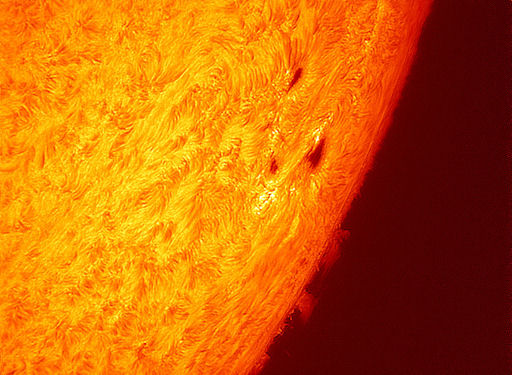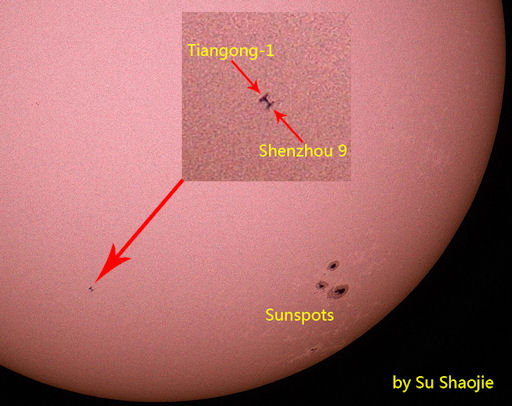Listen to radar echoes from satellites and meteors, live on listener-supported Space Weather Radio. | | |
WHY WON'T THE SUPERNOVA EXPLODE? A question has been troubling astronomers: Why won't the supernova explode? Although real stars blow up, the best computer models of dying stars do not result in much of a bang. NASA has launched a new observatory named "NuSTAR" to seek out the missing physics of stellar explosions. [video] [full story]
DEPARTING SUNSPOT: Big sunspot AR1504, the source of so many auroras on June 16th and 17th, is leaving the solar disk. Dave Gradwell of Birr, Ireland, photographed the active region yesterday as it approached the sun's southwestern limb:

"AR1054 is waving goodbye after putting on a great show," says Gradwell.
Although the sunspot is not directly facing Earth, it could still affect our planet. Magnetically speaking, Earth is well-connected to AR1504's location on the southwestern limb. A solar flare now could accelerate charged particles, which would be guided in our direction by curved lines of magnetic force. NOAA forecasters estimate a 10% chance of M-class solar flares from AR1504 during the next 24 hours. Solar flare alerts: text, voice.
Realtime Space Weather Photo Gallery
CHINESE SPACE TRANSIT: China's space program took another leap forward this week when Chinese astronauts onboard the Shenzhou 9 spacecraft successfully docked with the Tiangong 1 space station. Not long after the docking, which occured on Monday, June 18th, the joined spacecraft passed directly in front of the sun over Xinzhou, China, where amateur astronomer Su Shaojie recorded the split-second transit:

Photo details: Canon 450D camera, 104mm telescope, Baader solar filter, 1/2000 sec exposure , ISO100
"After the Shengzhou 9 successfully docked with Tiangong-1 at 14:07 Beijing time, I was happy to get this opportunity to take a picture of the two spaceship transiting the Sun," says Shaojie. "I used CalSky to predict the timing."
The mission's crew of three includes the first Chinese female astronaut, fighter pilot Liu Yang, 33. Yang, along with fellow taikonauts Commander Jing Haipeng, 46, and flight engineer, Liu Wang, 42, will spend the days ahead familiarizing themselves with their new space station, conducting scientific experiments, and practicing space dock procedures. They're expected to return to Earth before the end of the month.
The newly-manned Tiangong 1 is visible in the night sky, glowing about as brightly as a 1st magnitude star. Check the Simple Satellite Tracker or your smartphone for sighting opportunities.

